Glen Denny, Yosemite Golden Age Pioneer, Has Died
- Oops!Something went wrong.Please try again later.
This article originally appeared on Climbing
Glen Denny, 1939-2022
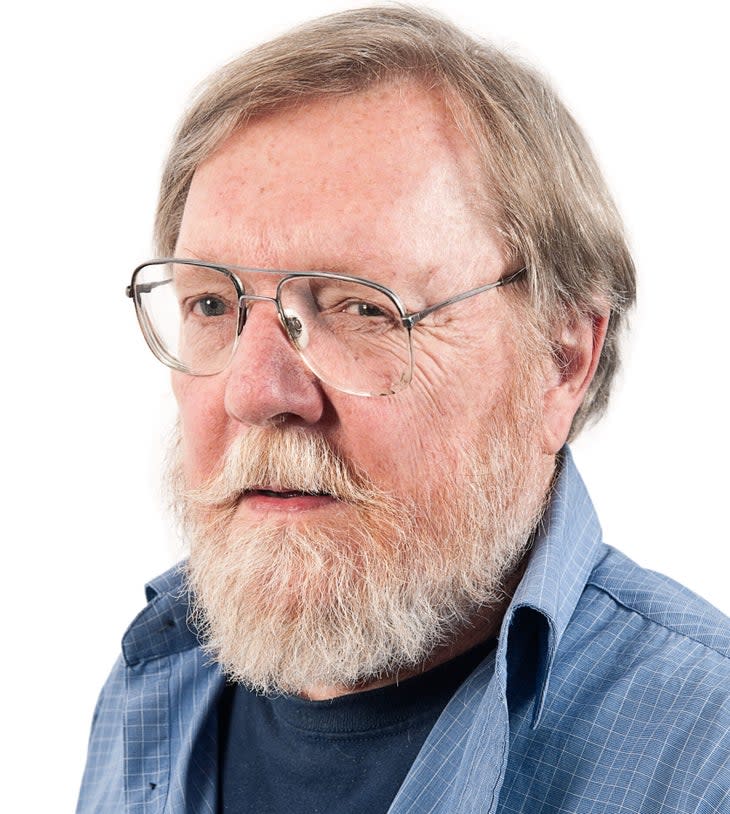
There is more in the lust for a mountaintop, wrote Nan Shepard in her classic, The Living Mountain, than the visceral thrill of the hunt. "What more there is lies within the mountain. Something moves between me and it. Place and a mind may interpenetrate till the nature of both is altered. I cannot tell what this movement is except by recounting it." And of all those who have recounted the Golden Age of Yosemite Climbing, none captured its soul more faithfully and more aesthetically than Glen Denny.
When Denny first rolled onto the valley in December, 1958, Warren Harding's fixed lines were hanging most of the way up The Nose, on El Capitan. "Oh, my God," said Denny at the sight of it all. "I've come to the right place."
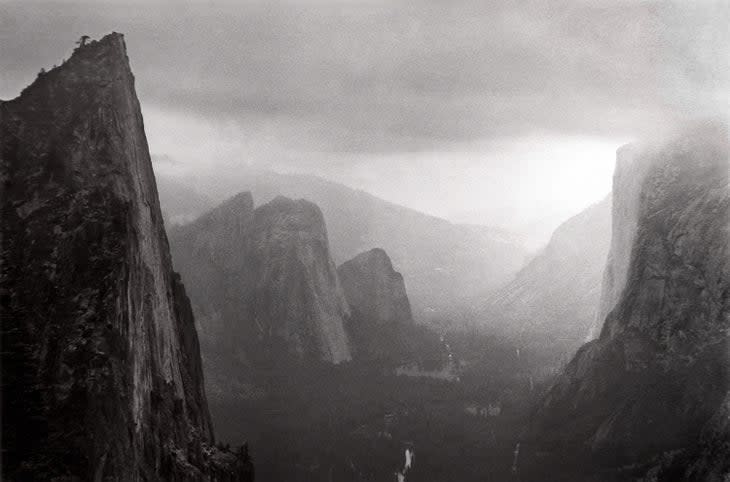
Denny had heard that Camp 4 was where the climbers lived, so he jogged straight there and introduced himself to Harding, who he recognized from pictures in the Fresno Bee. From that moment forward, Denny's evocative black-and-white photographs became widely recognized as the truest historical records of a time when the adventure sports revolution was achieving lift-off and El Cap was king.
See Yosemite’s Best Gallery By Glen Denny, Here
Even as a 19-year-old college dropout, Denny recognized a supernal movement going on--in the Nan Shepard sense of the word--between the Yosemite pioneers and the great rock walls. "And I didn't want to experience the disappearance" of the faces, high places, and dirt bag genesis of Camp 4. "It seemed too special."
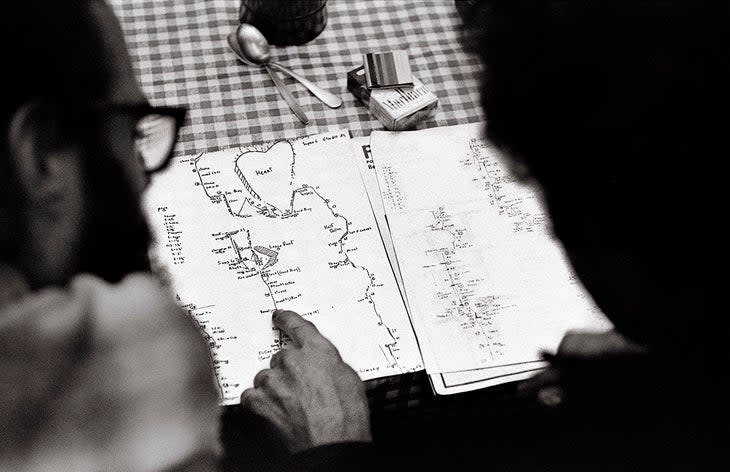
Denny's initial images were captured with amateur equipment. Then he saw the first published climbing photos by Henry Kendall and Tom Frost, "and realized that climbing photography could be a serious medium of self-expression." He needed better gear, so he started tending bar in the tony Ahwahnee Hotel, there in the valley. "The tips were fabulous," said Denny. "And that enabled me to get a Nikon and four lenses."
He combed the libraries for photo books, learning much from Edward Weston and Henri Cartier-Bresson. The Family of Man, based on Edward Steichen’s exhibition at the Museum of Modern Art, became Denny's creative pole star. "For me, it was a one-volume encyclopedia of everything photography could do." And what Glen Denny proceeded to do, the images he captured on film, and the legendary routes he pioneered along the way, are major plotlines--and amongst the most sought-after prizes--in all of world rock climbing. It all unfolded just as bold and poignant as Coltrane's Giant Steps.
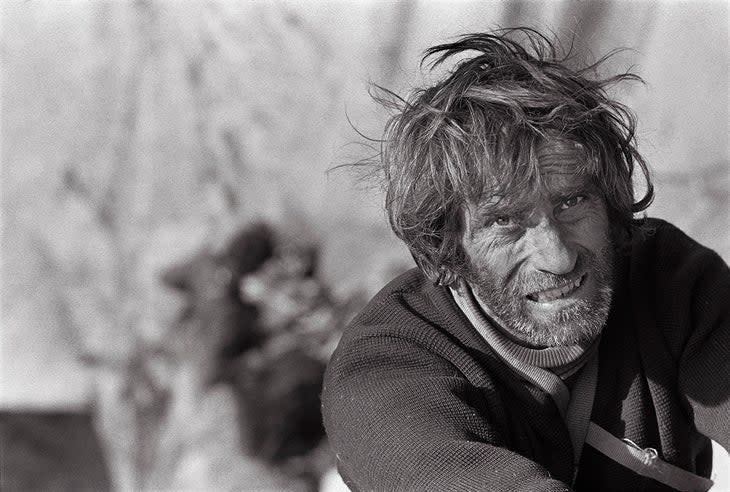
Get a load of this for a CV, starting with the South West Face of Mt. Conness (Tuolumne Meadows), and the East Face of Washington Column (Astroman), in 1959. The East Face of Keeler Needle (High Sierras), in 1960. The West Face of Leaning Tower, in 1961. The North Face of the Rostrum, and the Dihedral Wall 0n El Cap, in 1962. The 3rd ascent of The Nose in 1963 (Denny lead the Great Roof, and said, "It felt like I was climbing up the vault of a Cathedral."). Then many exploratory runs up the North American Wall, and finally the FA of The Prow, on Washington Column, in 1969, to this day one of the most well-traveled big walls on the planet. It boggles the mind to imagine the epics logged on these Glen Denny routes over the last 50 years.
And on every foothold and ledge along the way, Glen Denny was making photographs that are so much more than action shots, featuring a great or arty angle of a rock climber getting radical. Denny images are editorial, with such unity that you cannot parse out the grimace from the sunset or the flying buttress from the storm cloud. And the lone climber in slings, peering into the void. Here is where "place and a mind interpenetrate."
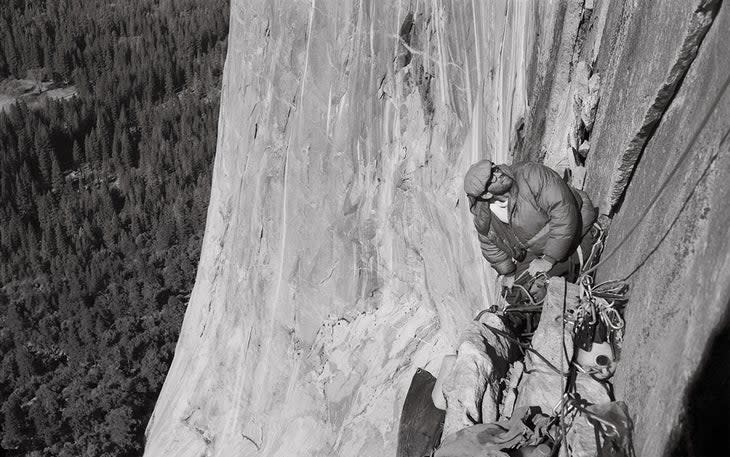
Fancy talk? Not even. In capturing the seminal climbs of the golden age, and the social history of Camp 4 in the bargain, both the modern weekend warrior and the dirt bag crusher can reverse engineer their lives to the timeless images of Royal Robbins, c. 1959, arraying pitons over a picnic table before the 2nd ascent of The Nose; of the great Frank Sacherer ("The father of Modern Free Climbing ... "), in knickers and tailored sweater, leaning against a Jeffery Pine and staring at the ground, perhaps pondering free climbing the stupendous, 2,200 foot Direct North Buttress of Middle Cathedral, or the laser cut Stove Leg cracks on El Cap (he went on to bag both, and many more).
“Sometimes you can see the trail makers that guide your journey, your art,” says the photographer Dean Fidelman who was working with Denny at the time of his death. “Glen Denny was that to me and so much more. Glen was a gifted photographer who worked hard and understood that his images expressed the Golden Age of Yosemite Climbing.
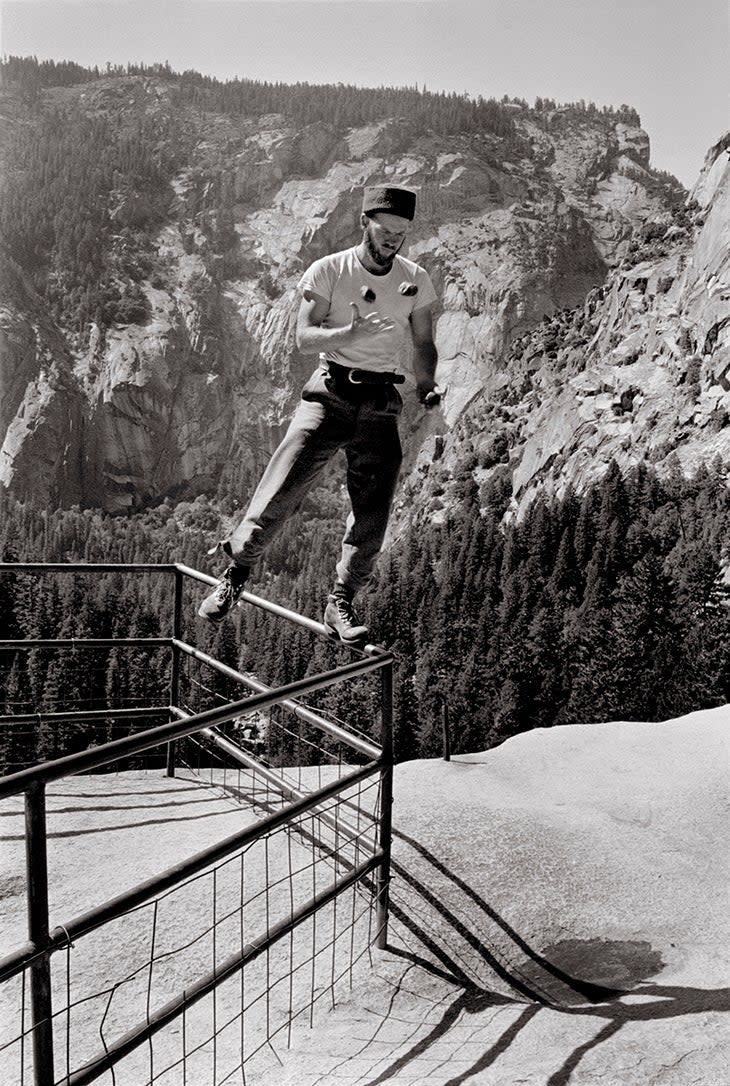
“I remember going through two shoe boxes that contained all of the negatives from his 60’s book with him. All of them in old glassine envelopes, this complete history in my hands.”
For my money, as a person who essentially grew up in Yosemite, my eyes fly straight to the sweeping master shots Glen captured of the classic monoliths. The skulking shadows and drifting clouds, masking great swaths of crenellated granite, raked here and there by blinding cuts of light. These always evoked in me a transcendent world, beyond limitations, time, even existence. An incandescent space where nothing distinct exists, where nothing lasts, but where nothing is truly destroyed. Like every reality that matters ultimately to human beings, the world Glen Denny lived and captured is a reality of the heart. And in my heart at least, Glen Denny and the denizens of Camp 4 shall live forever. As the old poem says:
Do not stand at my grave and weep, I am not there. I am a thousand winds that blow; I am the diamond glints on the snow. I am the gentle autumn’s rain. I am the soft star that shines at night. Do not stand at my grave and cry. I am not there; I did not die.
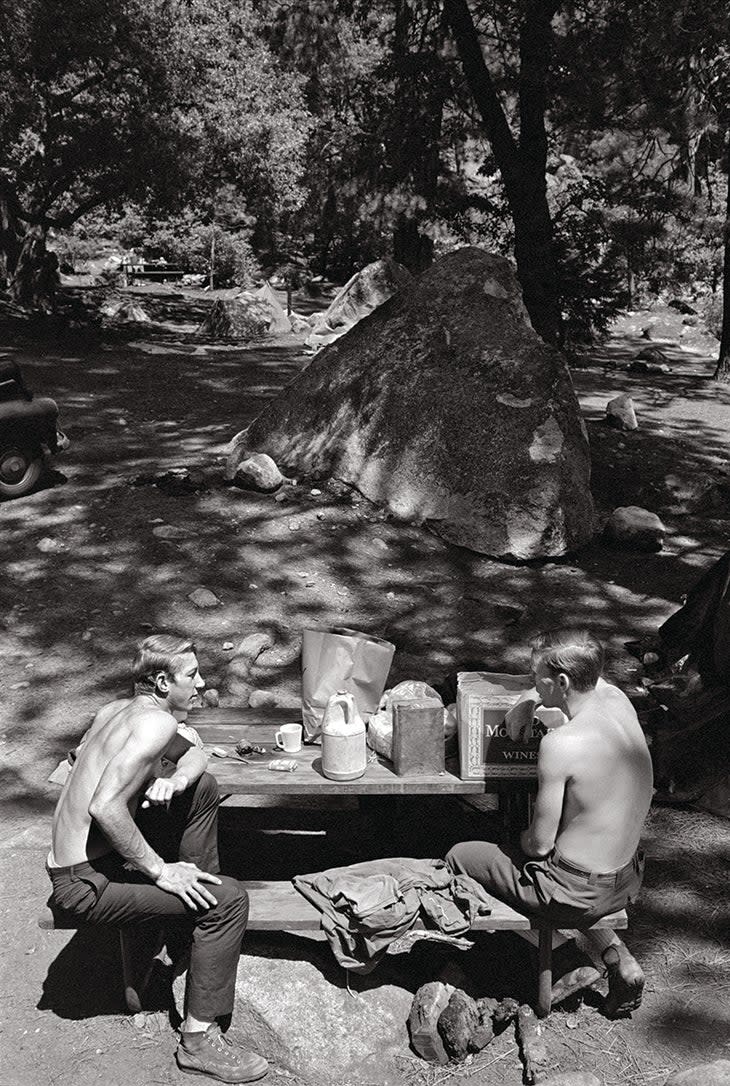
Glen Denny was born in Modesto, California, in 1939, and grew up in the nearby town of Livingston, where his father was a high school teacher. His two books, Valley Walls: A Memoir of Climbing & Living in Yosemite, and Yosemite In The Sixties, are both available from Amazon.com.
For exclusive access to all of our fitness, gear, adventure, and travel stories, plus discounts on trips, events, and gear, sign up for Outside+ today.

